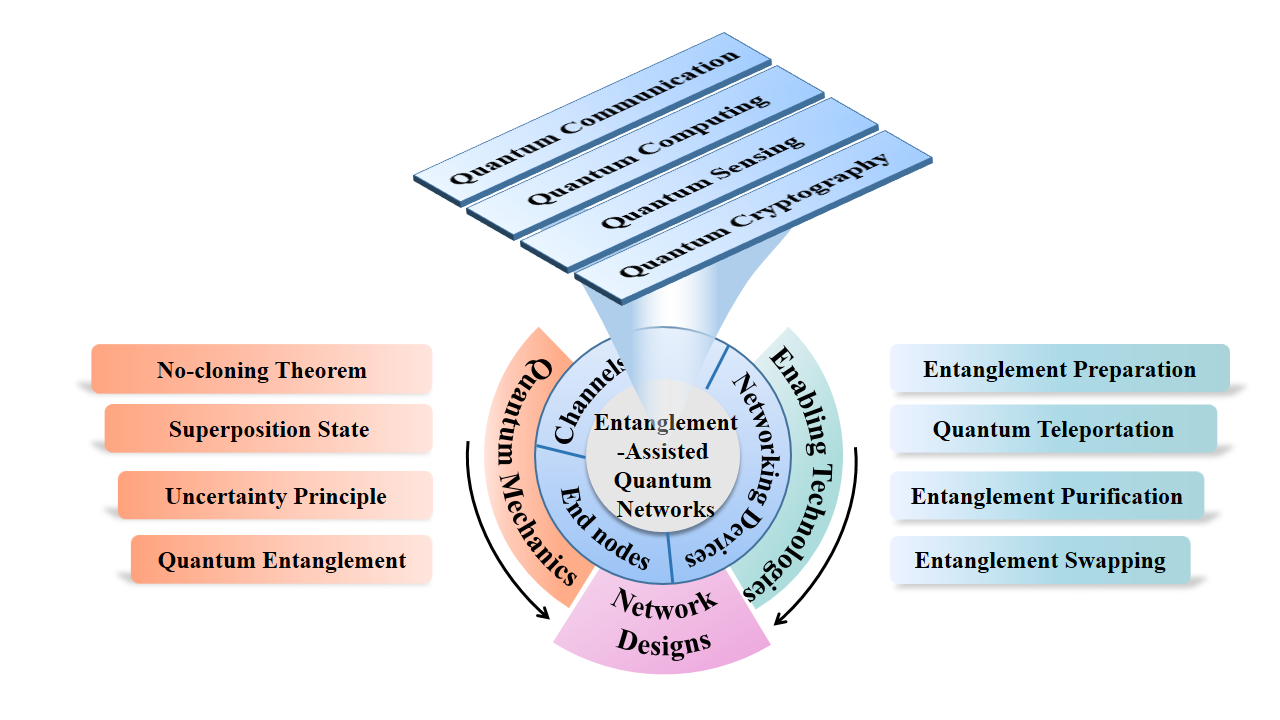Quantum applications offer significant advantages over their classical counterparts primarily due to the fundamental principles of quantum mechanics, especially quantum entanglement. To harness the full potential and broaden the scope of quantum applications, it becomes imperative to establish entanglement-assisted quantum networks by connecting multiple quantum nodes through physical channels. Quantum networks have shown promise in terms of improving the overall functional benefits of the Internet and enabling applications with no counterpart in the classical world, which is a breakthrough technology towards the unimaginable future. However, entanglement-assisted quantum networks differ fundamentally from classical networks, encompassing various aspects including physical resources and top-level applications. Therefore, it is crucial to undertake fundamental yet essential endeavors in order to pave the way for building entanglement-assisted quantum networks.
The paper titled “Entanglement-Assisted Quantum Networks: Mechanics, Enabling Technologies, Challenges, and Research Directions” by Zhonghui Li, Kaiping Xue, Jian Li, Lutong Chen, Ruidong Li, Zhaoying Wang, Nenghai Yu, David S.L. Wei, Qibin Sun, and Jun Lu serves a survey and tutorial in this field. It begins by offering an introduction to quantum mechanics and entanglement-based enabling technologies involved. Subsequently, the paper delves into the subject of entanglement-assisted quantum networks, covering aspects such as development stages, network elements, working principles, and so on. Additionally, the paper presents some challenges to build entanglement-assisted quantum networks. Lastly, the paper concludes by outlining a several research directions pertaining to network design.
